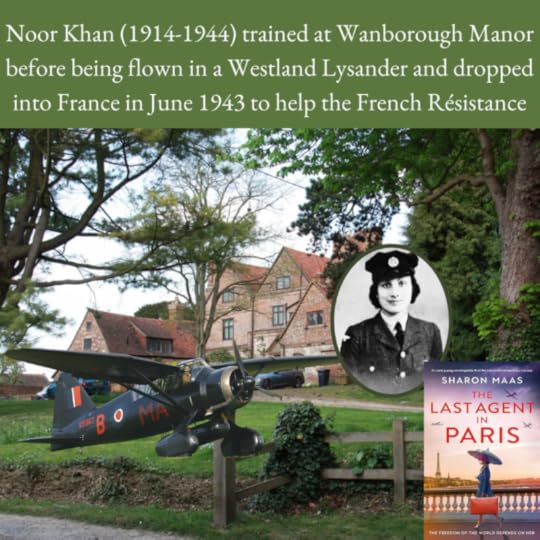THE LAST AGENT IN PARIS by Sharon Maas
THE LAST AGENT IN PARIS is a spellbiinding story about an unusual young woman, and the dangerous career she chooses for herself.
Noor-un-Nisa Inayat Khan (1914-1944) was the daughter of an Indian man and an American woman.
Her father, Inayat Kahn, born in Baroda, India, came from a line of Indian Muslims whose forebears included classical musicians and nobles. One of his ancestors was Tipu Sultan (1751-1799), who ruled Myesore. He was a noted teacher of Sufism.
Her American mother, Ora Ray Baker, came from Albuquerque New Mexico, meeting Inayat Khan as a teenager when he was on his travels. The couple conducted a long-distance relationship and only married once she’d turned twenty-one in 1913. Their eldest child, Noor, arrived the very next year. On her marriage to Khan, Ora Ray cut her ties to her family an adopted the name Amina Begum. She is known for spreading Sufism into the Western World.
Noor’s parents led a peripatetic life, which meant that Noor herself was born in Moscow. Eventually, the family settled in Paris, where Inayat Khan created a communtiy of Indian Muslim expats who came to him for spiritual guidance and music lessons.
After the fall of Paris in 1940, Noor and her family left for England. It was there, in 1941, that she was offered the dangerous position of British resistance agent. Her job was to be a wirelss operator in a team of three, the person who sent messages to London. These operatives were tasked with spying and sabotage in countries occupied by the Axis powers, especially those occupied by Nazi Germany. Noor was sent to France because she was fluent in French.
Apparently, the typical life-span of one of these agents was six weeks. But Noor must have been very good at her job because she managed to survive for several months. Dropped on the night of 16 to 17 June 1943, she was not captured by the Nazis until 13 October of that year, a period of four months. And even then, she was found because someone betrayed her. The person in question, Renée Garry was the sister of Émile Henri Garry, the head agent in the Cinema/Phono network, and the person who was Noor’s organiser. So his sister was not an obvious person to commit that kind of treachery, even for a large sum of money. But the Germans were rounding up the British and French spies one by one and sending them East.
Noor was eventually executed along with three other women at dawn on the morning of 13 September 1944 in Dachau Concentration Camp. Émile Henri Garry was executed at Buchenwald at roughly the same time.
I have never read any of Ms. Maas’ work before, and I was pleased to discover her. The idea of telling the reader about Noor’s arrest in the Prologue is a smart move, as it gives the reader a clear idea of where this novel is going, the beginning of the arc of tension that keeps them turning those pages. Maas’ descriptions of Noor’s early life, including the way her father used her to calm a dangerous crowd in Moscow, were superlative.
If you enjoy Second World War literature, you should definitely read this novel.
 The post THE LAST AGENT IN PARIS by Sharon Maas appeared first on Cynthia Sally Haggard.
The post THE LAST AGENT IN PARIS by Sharon Maas appeared first on Cynthia Sally Haggard.
Cynthia Sally's Blog
- Cynthia Sally Haggard's profile
- 129 followers



